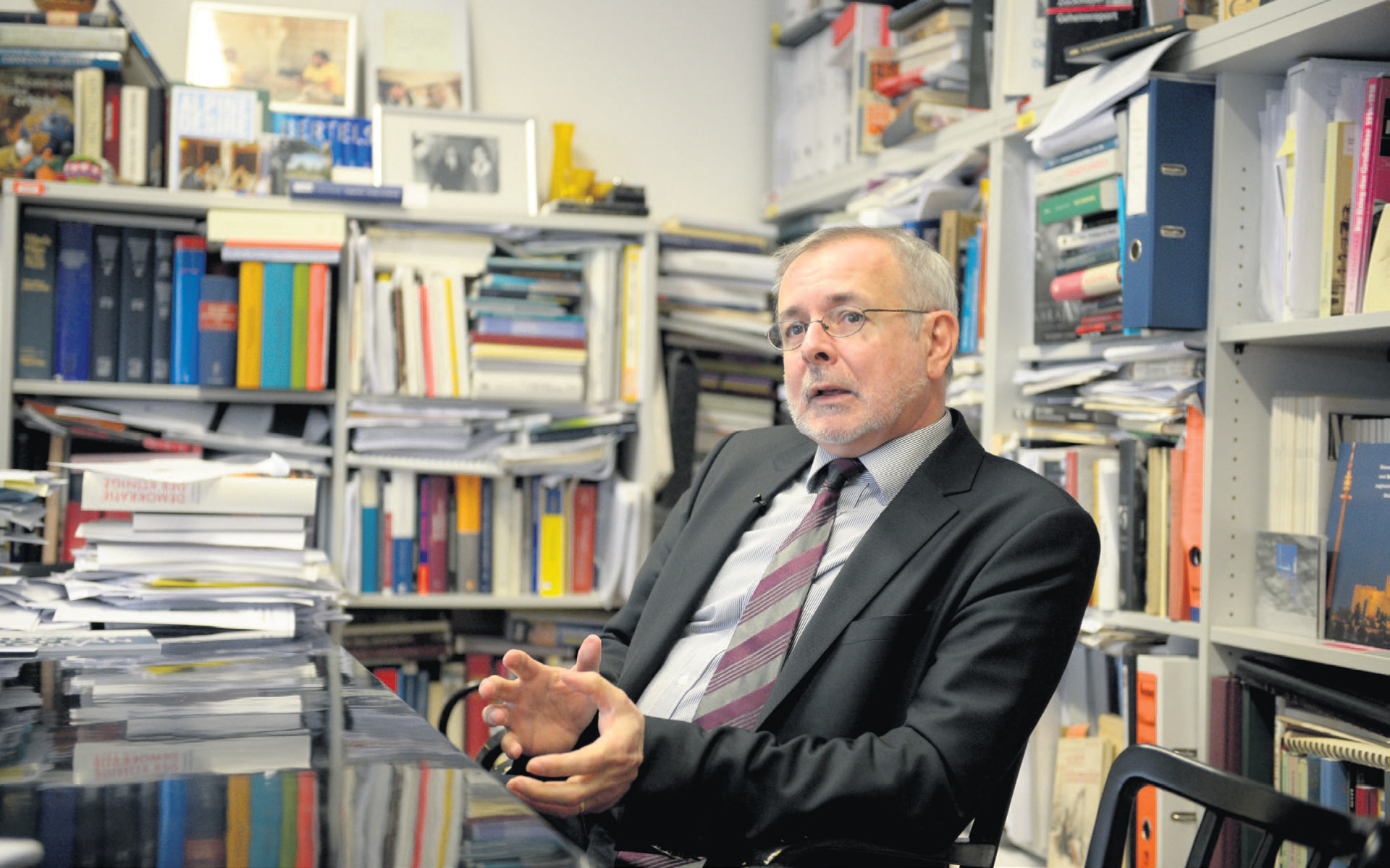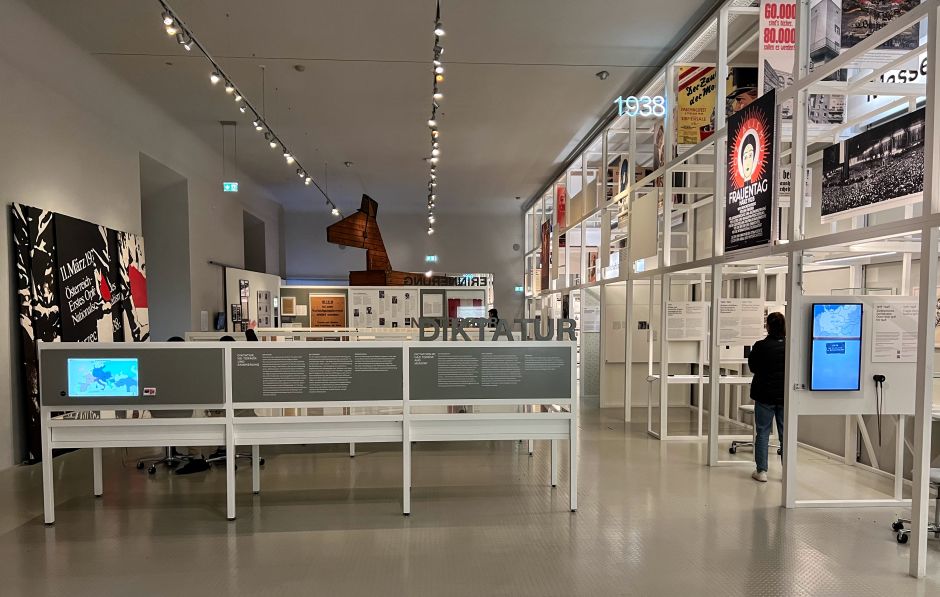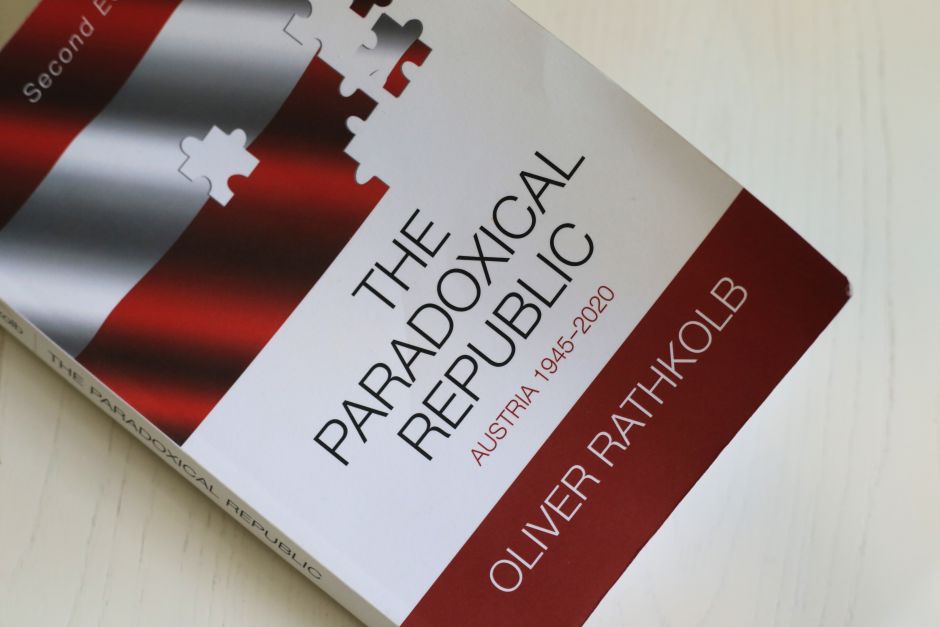
Oliver Rathkolb is a Professor of contemporary history at the University of Vienna and Chairman of the Academic Committee of the House of European History in Brussels. Commissioned by Austria's Minister of Culture, Prof. Rathkolb and his team prepared the legal basis and historical framework for the House of Austrian History (Haus der Geschichte Österreich), a highly informative museum inside the Imperial Palace. Recently, I had a chance to discuss some of the key themes in his book, The Paradoxical Republic: Austria 1945–2020 (Berghahn Books, New York - Oxford, 2nd edition, 2021).
How should we imagine the decade of Allied Occupation (1945-55) in Austria, following the end of WWII?
We need to go back to the Nazi period because, ironically, Austria profited immensely from the Nazi war economy. After the annexation of Austria by Nazi Germany in 1938 (Anschluss), the Nazis created a modern industrial infrastructure that hadn’t existed before. They started electricity power plants, built huge steel factories, such as the Reichswerke Hermann Göring in Linz, a chemical industry, and exploited the oil fields in eastern Austria. They kept these factories going by using hundreds of thousands of forced laborers, including Hungarian Jews.
After the war, Austria was occupied by the Allied countries and divided into four zones: the American, the Soviet, the British, and the French. Was this a better outcome than total Soviet control, as experienced by neighboring Hungary?
This was highly favorable to Austria. The Allied Occupation was mainly shaped by global geopolitical events. As early as the end of 1941, Stalin decided that he wouldn’t integrate Austria into his direct Communist sphere of influence.
What happened to the Nazi-built companies after the war?
In the Soviet Zone – Lower Austria, Burgenland, and parts of Vienna – the Soviets established their own economy (USIA) and took direct control of these companies and of agriculture. This was an economic disadvantage for these regions because the Soviets were interested only in extracting profits. For example, all money from the oil fields went straight to Moscow. They made zero investments. But when the Austrian State Treaty in 1955 gave back the country’s independence, all companies were turned over to the Austrian state. The Austrians had to pay oil reparations for years.
How about the Western Zones?
The Americans, after some internal disagreements, handed over the German property to the Austrian government without demanding reparations. Suddenly, Austria had this huge nationalized industry, which quickly started to integrate into the West. Austria was able to join the Marshall Plan (1948-51), in fact, it received the third highest amount of recovery funds per capita. Crucially, this money could be used to rebuild the destroyed infrastructure, something that Soviet-controlled Czechoslovakia and Hungary next door obviously didn’t have the access to.
After its 1955 independence, did Austria become a fully integrated member of the Western European economy?
Not exactly. Austria’s “Western system” was different from the U.S. model of capitalism. Both the conservative People’s Party (ÖVP) and the Social Democrats (SPÖ) wanted to maintain a nationalized industry and the strong influence of the Chamber of Commerce and the Chamber of Labor in the political and economic decision-making elite. The Americans accepted this as historical fact and didn’t oppose the huge state control of the economy.
Did the Soviet Union cease to have control over Austria after this 1955 independence?
Pretty much, concerning the formal integration into the European Economic Community (EEC), although Austria wouldn’t have been able to apply for full membership until the late 1980s. Even for Mikhail Gorbachev, the last Soviet leader, it took a long time to accept the fact that Austria will join the EEC. His thinking was rooted in Stalin-era wartime doctrine: avoid any type of integration between Austria and Germany at all cost. They were afraid it would create too strong a “Germanic” power in the Soviet Union’s backyard, and risk a repeat of their earlier experience with the Nazis. In fact, the EEC question had little practical implication, since Austria had been economically tied to Germany already since the 1960s and 1970s.

Your book highlights the achievements of Social Democratic Chancellor Bruno Kreisky (1970-83). Can you talk about him?
Bruno Kreisky wasn’t a typical Austrian politician. He was an assimilated Jewish intellectual and an early member of the socialist working youth. He was imprisoned by the conservative dictatorship under Chancellor Schuschnigg in 1935, then re-imprisoned by the Nazis in 1938 and forced into exile in Sweden. After the war, he came back to Austria, became Under Secretary of State in 1953, and by 1959 he was Foreign Minister, soon with an international reputation.
Why was he important?
He is the most successful Austrian Chancellor to push an active neutrality policy. During his reign, Austria built an independent, small-state identity that clearly separated it from Western Germany and Eastern Germany. He understood that neutrality required proactive policies and a working relationship with both sides to prevent an all-out nuclear warfare in Europe during the Cold War. While he was a strong anti-Communist, he started a working relationship with neighboring Communist countries, especially Hungary, and was also involved with the Middle Eastern peace negotiations.
And he brought the UN headquarters to Vienna.
He knew it would benefit the small and militarily weak Austria to have the United Nations be based here, which is also the reason why the Austrian Kurt Waldheim was elected UN Secretary General several times. Austrian people liked that in Kreisky they had someone on the world stage. Of course, at that level he was just a political communicator without real power.

Stepping back a bit, you talk in detail about Austria’s search for identity. What happened to Austria’s self image after WWI, following the collapse of the Austro-Hungarian Empire, and how did this evolve after the war?
In 1918, both Austria and Hungary suddenly lost their power. At this point, Austria looked to Germany in search of its former glory. In 1938, the clear majority of Austrians cheered the Nazi takeover. After the disaster of the war, Austria started using the cultural achievements of the Habsburg Monarchy to rebuild a sense of national identity. It completely ignored the Czech, Hungarian, Slovenian or whatever background of these achievements, for example the identity of actors, conductors, singers – everything was simply treated as Austrian.
Was it successful?
In the late 1950s, opinion polls showed that more than 40 percent of Austrians still claimed they were Germans living in an Austrian state. This was a real blow to the government, which wanted to create a positive Austrian identity and get rid of the German cultural leanings. Kreisky, as foreign minister, suggested that neutrality be the common identifier.
How did this one work out?
Since 1965, the Austrian national holiday is celebrated on the day when neutrality came into force by constitutional law in 1955. Every economic and social success has been attributed to neutrality. It’s a construct and only partly true, but now deeply embedded in the national consciousness. In 2000, the conservative government decided to join NATO but quickly backtracked when the polls showed neutrality was sacred to voters. Even after Russia’s attack on Ukraine, while there’s a strong pro-Ukraine sentiment, neutrality is untouchable. By now, this concept is rooted in nostalgia and it symbolizes Austria’s post-1945 economic success.
Is there still a meaningful pro-German sentiment?
Not anymore. Twenty years ago we would have had a debate, but the Austrian identity today is very strong. Ironically, Austria’s military neutrality is much shakier than the Swiss. If you take your neutrality seriously, as they do, you need to invest in effective military defense and a small-state army. Austria invests only a very small amount of the budget.
Instead of neutrality, what might be a more fitting symbol of Austrian identity?
Tricky question. Austrian society is a result of huge migrations starting in the 19th century from places like Bohemia, Moravia, Hungary, Slovenia, Croatia, Northern Italy, Poland, Ukraine, and so on. I wouldn’t say a melting pot because the German dominance was brutal and integrated all these migrants within one generation, else they couldn’t succeed socially or culturally. For example, my mother was of Moravian origin, but within a generation she took off her traditional dress, spoke no words of Czech, and became very anti-Czech. She was a typical product of the system.
Still today, Vienna feels very multicultural.
We are a migrant country. Fifty percent of the Viennese population doesn’t have the right to vote because they aren’t Austrian citizens. The biggest group is German, but lots of Turkish, Hungarians, Slovaks, people from the former Yugoslavia. I think this is the real basis of our identity. But this is something Austrians don’t like, as you can see in our policy toward asylum, refugees, and migrants.